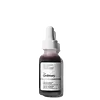What's inside
What's inside
 Key Ingredients
Key Ingredients

 Benefits
Benefits

 Concerns
Concerns

 Ingredients Side-by-side
Ingredients Side-by-side

Water
Skin ConditioningMelaleuca Alternifolia Leaf Extract
PerfumingAcrylates Copolymer
Potassium Laureth Phosphate
EmulsifyingPotassium Cocoyl Glycinate
Sodium Cocoyl Alaninate
Cocamidopropyl Betaine
CleansingButylene Glycol
HumectantSodium Chloride
MaskingPEG-90 Diisostearate
CleansingSodium Benzoate
MaskingPotassium Hydroxide
BufferingCitric Acid
BufferingPhenoxyethanol
PreservativeStyrene/Acrylates Copolymer
Hydroxypropyl Methylcellulose
Emulsion StabilisingGuar Hydroxypropyltrimonium Chloride
Skin ConditioningTrehalose
HumectantHippophae Rhamnoides Extract
MaskingDisodium EDTA
Lavandula Angustifolia Oil
MaskingLinalool
PerfumingMelaleuca Alternifolia Leaf Oil
AntioxidantMorus Alba Extract
AstringentMorus Alba Bark Extract
Skin ConditioningSalix Nigra Bark Extract
Skin ProtectingAdansonia Digitata Leaf Extract
Skin ConditioningPropylene Glycol
HumectantSpirodela Polyrhiza Extract
Skin ConditioningGlyoxal
AntimicrobialHamamelis Virginiana Water
AstringentWater, Melaleuca Alternifolia Leaf Extract, Acrylates Copolymer, Potassium Laureth Phosphate, Potassium Cocoyl Glycinate, Sodium Cocoyl Alaninate, Cocamidopropyl Betaine, Butylene Glycol, Sodium Chloride, PEG-90 Diisostearate, Sodium Benzoate, Potassium Hydroxide, Citric Acid, Phenoxyethanol, Styrene/Acrylates Copolymer, Hydroxypropyl Methylcellulose, Guar Hydroxypropyltrimonium Chloride, Trehalose, Hippophae Rhamnoides Extract, Disodium EDTA, Lavandula Angustifolia Oil, Linalool, Melaleuca Alternifolia Leaf Oil, Morus Alba Extract, Morus Alba Bark Extract, Salix Nigra Bark Extract, Adansonia Digitata Leaf Extract, Propylene Glycol, Spirodela Polyrhiza Extract, Glyoxal, Hamamelis Virginiana Water
Glycolic Acid
BufferingWater
Skin ConditioningAloe Barbadensis Leaf Water
MaskingSodium Hydroxide
BufferingDaucus Carota Sativa Extract
PerfumingPropanediol
SolventCocamidopropyl Dimethylamine
EmulsifyingSalicylic Acid
MaskingLactic Acid
BufferingTartaric Acid
BufferingCitric Acid
BufferingPanthenol
Skin ConditioningSodium Hyaluronate Crosspolymer
HumectantTasmannia Lanceolata Fruit/Leaf Extract
AntioxidantGlycerin
HumectantPentylene Glycol
Skin ConditioningXanthan Gum
EmulsifyingPolysorbate 20
EmulsifyingTrisodium Ethylenediamine Disuccinate
Potassium Sorbate
PreservativeSodium Benzoate
MaskingEthylhexylglycerin
Skin Conditioning1,2-Hexanediol
Skin ConditioningCaprylyl Glycol
EmollientGlycolic Acid, Water, Aloe Barbadensis Leaf Water, Sodium Hydroxide, Daucus Carota Sativa Extract, Propanediol, Cocamidopropyl Dimethylamine, Salicylic Acid, Lactic Acid, Tartaric Acid, Citric Acid, Panthenol, Sodium Hyaluronate Crosspolymer, Tasmannia Lanceolata Fruit/Leaf Extract, Glycerin, Pentylene Glycol, Xanthan Gum, Polysorbate 20, Trisodium Ethylenediamine Disuccinate, Potassium Sorbate, Sodium Benzoate, Ethylhexylglycerin, 1,2-Hexanediol, Caprylyl Glycol
 Reviews
Reviews

Ingredients Explained
These ingredients are found in both products.
Ingredients higher up in an ingredient list are typically present in a larger amount.
Citric Acid is an alpha hydroxy acid (AHA) naturally found in citrus fruits like oranges, lemons, and limes.
Like other AHAs, citric acid can exfoliate skin by breaking down the bonds that hold dead skin cells together. This helps reveal smoother and brighter skin underneath.
However, this exfoliating effect only happens at high concentrations (20%) which can be hard to find in cosmetic products.
Due to this, citric acid is usually included in small amounts as a pH adjuster. This helps keep products slightly more acidic and compatible with skin's natural pH.
In skincare formulas, citric acid can:
While it can provide some skin benefits, research shows lactic acid and glycolic acid are generally more effective and less irritating exfoliants.
Most citric acid used in skincare today is made by fermenting sugars (usually from molasses). This synthetic version is identical to the natural citrus form but easier to stabilize and use in formulations.
Read more about some other popular AHA's here:
Learn more about Citric AcidSodium Benzoate is a preservative. It's used in both cosmetic and food products to inhibit the growth of mold and bacteria. It is typically produced synthetically.
Both the US FDA and EU Health Committee have approved the use of sodium benzoate. In the US, levels of 0.1% (of the total product) are allowed.
Sodium benzoate works as a preservative by inhibiting the growth of bacteria inside of cells. It prevents the cell from fermenting a type of sugar using an enzyme called phosphofructokinase.
It is the salt of benzoic acid. Foods containing sodium benzoate include soda, salad dressings, condiments, fruit juices, wines, and snack foods.
Studies for using ascorbic acid and sodium benzoate in cosmetics are lacking, especially in skincare routines with multiple steps.
We always recommend speaking with a professional, such as a dermatologist, if you have any concerns.
Learn more about Sodium BenzoateWater. It's the most common cosmetic ingredient of all. You'll usually see it at the top of ingredient lists, meaning that it makes up the largest part of the product.
So why is it so popular? Water most often acts as a solvent - this means that it helps dissolve other ingredients into the formulation.
You'll also recognize water as that liquid we all need to stay alive. If you see this, drink a glass of water. Stay hydrated!
Learn more about Water